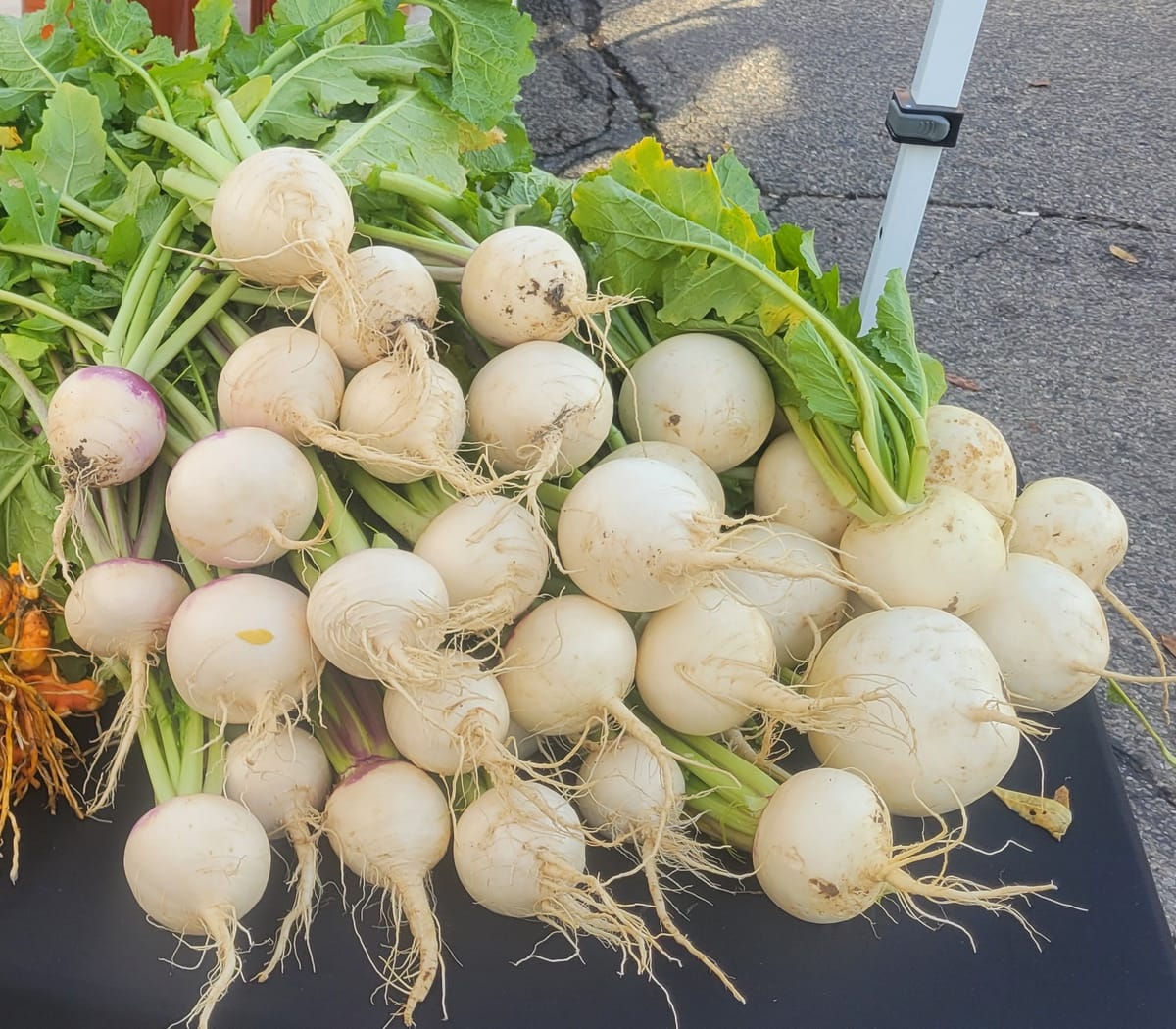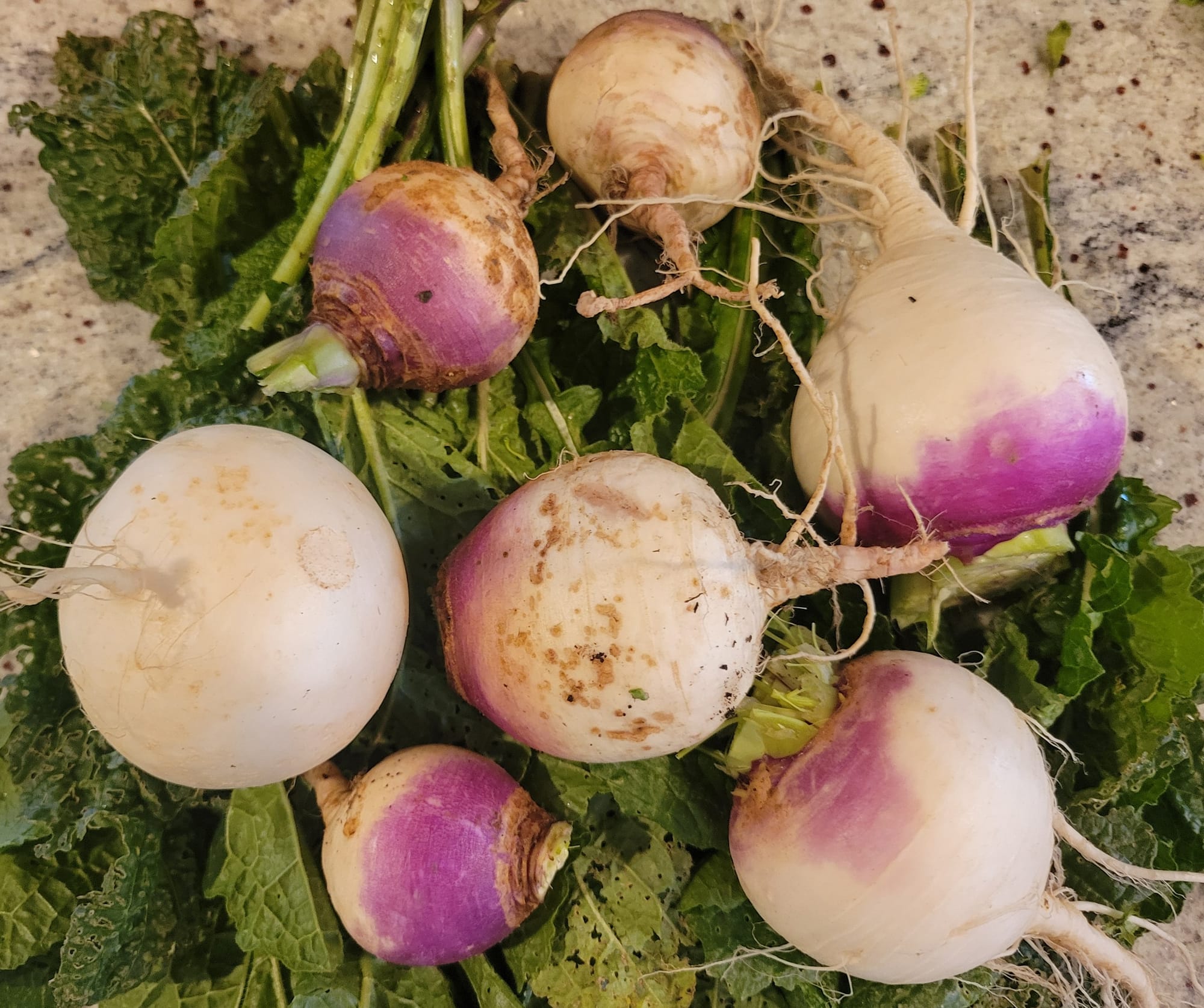On My Plate: Turnips
Turnips have been much maligned since ancient times, and are widely used to hurl verbal insults.

The turnips now displayed at Oxford’s Farmers Market are gorgeous: large, wild, bushy, bright-green leaves sticking out from round orbs. Jennifer Bayne’s 7 Wonders Farm has had white turnips for the past several weeks, and purple turnips were recently added to the display. The white ones are relatively mild, whereas the purple ones have a bit of a bite to them, “like a radish,” explains Jennifer.

Turnips have been much maligned since ancient times, when Rome aristocrats regarded them as food reserved for poor people. Our tradition of carving pumpkins can be traced to Ireland, where scary faces were carved in turnips to ward off evil spirits. In the American colonies, turnips – especially the greens – became associated with the diet of enslaved peoples.
Turnips are widely used to hurl verbal insults. Someone who just fell off a turnip truck is a naive country bumpkin, although the negative is more widely used (“I didn’t just fall off a turnip truck” means I’m not gullible and unsophisticated). Johnny Carson is credited with popularizing the phrase during the 1970s on The Tonight Show.
My list of several dozen insults in French using vegetables, courtesy of the weekly French Club at Oxford Seniors, includes two with turnips. “Avoir du sang de navet” (to have the blood of a turnip) means to be spineless. My favorite is “c’est un navet” (it’s a turnip), uttered when one hates a movie just viewed in a theater (Netflix doesn’t count).
The British are credited with the expression “you can’t squeeze blood from a turnip.” My favorite British insult of this maligned vegetable is the Turnip Prize, awarded annually by the New Inn pub in Wedmore, Somerset County, to the person who has created the year’s worst artwork. This past year’s winner is “Tax in Creases,” created by Wonga Woman (not her real name), for displaying a crumpled white shirt studded with tacks. Please, faithful readers, note the title’s pun. She told the BBC “I couldn’t be bothered to finish the ironing.” First prize is a turnip nailed to a block of wood.
The turnip is “an ugly maligned old thing,” writes food historian Bill Price in “Fifty Foods That Changed the Course of History,” but it “changed the course of history.” Farmers in fourteenth century Belgium learned that cereals and turnips depleted different nutrients from the soil and restored different ones, so to maintain soil productivity they began to alternate planting of cereal crops and turnips. Thus, farmland could be productive every year, instead of left fallow some years.
The turnip took on a new and ultimately more important role as fodder for Europe’s growing animal population. The turnip was especially valuable because all of it – root, stem and leaves – is edible, unlike, for example, tomato and rhubarb, which have toxic leaves.
I’ve reached the end of this column without yet mentioning how to actually eat a turnip. In our household, the answer is simple. Chop the leaves and cook them gently like other greens, such as chard and collards. Peel the root, slice it and eat it raw.
Turnips store very well, so buy several to keep in the fridge through the winter. With the growing season having ended for most of our local produce, the current availability of local turnips should be a source of praise, not scorn. And just in case we ever get a movie theater again in Oxford, file away the expression “c’est un navet.”
James Rubenstein is president of the Board of Directors for the Oxford Free Press and professor emeritus of geography at Miami University.




